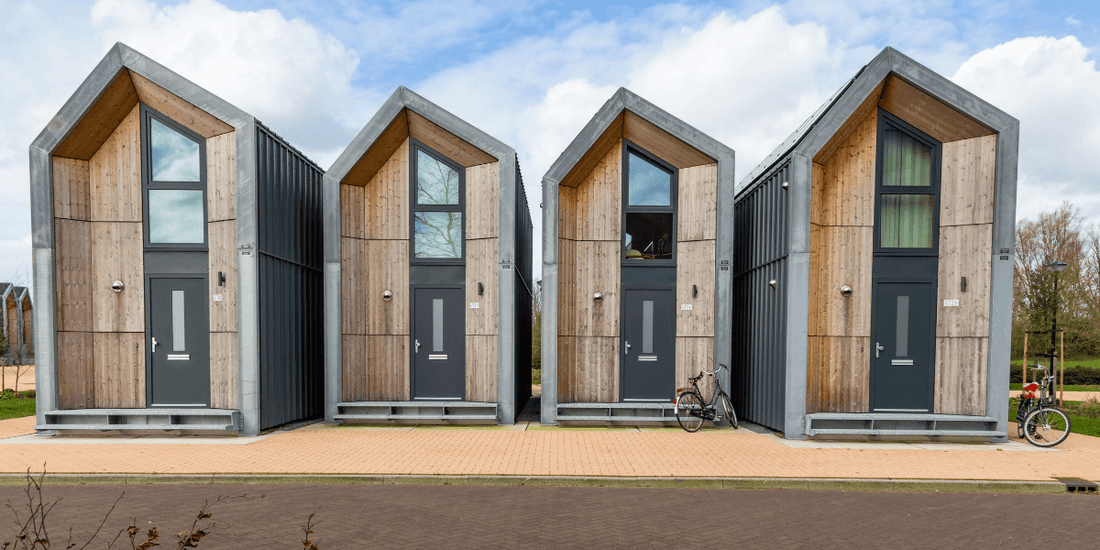
Maximizing Comfort: Ventilation Tips for Tiny Home Builders
Share
Living in a tiny home offers a unique set of challenges and opportunities. One crucial aspect that often gets overlooked is ventilation. Proper ventilation is essential for maintaining a comfortable and healthy living environment in compact spaces. In this blog post, we'll explore effective ventilation tips tailored specifically for tiny home builders, including the incorporation of ductless Energy Recovery Ventilators (ERVs).
1. Prioritize Cross Ventilation
Cross ventilation is the key to ensuring fresh air circulates through your tiny home efficiently. Position windows, doors, and vents strategically to create a pathway for air to flow from one side of the home to the other. This natural breeze not only improves air quality but also helps regulate indoor temperatures. Consider placing windows on opposite walls or incorporating skylights to facilitate cross ventilation.
2. Opt for Operable Windows
Choose windows that can be opened and closed easily to control the airflow. Casement windows, awning windows, or sliding windows are excellent choices for tiny homes. These types of windows allow you to adjust the amount of ventilation according to your preferences and the weather conditions. Additionally, installing window screens can keep insects out while still allowing fresh air in.
3. Invest in a Ventilation System
For tiny homes in regions with extreme weather conditions, a dedicated ventilation system can be a game-changer. Ventilation systems, such as exhaust fans or whole-house ventilation units, ensure a continuous exchange of indoor and outdoor air. Look for energy-efficient options to maintain a comfortable environment without compromising your tiny home's energy consumption.
4. Incorporate Roof Ventilation
Roof vents, such as ridge vents or roof turbines, can significantly enhance the overall ventilation of your tiny home. These vents allow hot air to escape from the top of the structure, preventing heat buildup in the living space. Ensure that the roof ventilation system is properly installed and consider adding an automatic vent opener for convenience.
5. Embrace Natural Cooling Strategies
Tiny homes can benefit from various natural cooling strategies that reduce the reliance on mechanical systems. Use reflective roofing materials to minimize heat absorption, and consider shading options like awnings, pergolas, or strategically planted trees. These measures can help keep your tiny home cool in the summer without relying heavily on air conditioning.
6. Incorporate Ductless Energy Recovery Ventilators (ERVs)
Ductless ERVs are a modern and efficient solution for maintaining optimal indoor air quality. These systems help exchange stale indoor air with fresh outdoor air while recovering energy in the process. Ductless ERVs are compact and easy to install, making them ideal for tiny homes where space is at a premium. They work by transferring heat and moisture between the outgoing and incoming air streams, ensuring that your tiny home remains well-ventilated without compromising energy efficiency.
7.Utilize High Ceilings
Take advantage of vertical space in your tiny home by incorporating high ceilings. Tall ceilings create a larger volume of air, allowing hot air to rise and accumulate away from the living area. This simple design choice can enhance the overall ventilation and comfort of your tiny home.
8.Regular Maintenance
Lastly, maintaining your ventilation system is crucial for its long-term effectiveness. Clean filters, inspect vents, and address any issues promptly. Regular maintenance not only ensures optimal performance but also extends the lifespan of your ventilation components.
Whether you're building from scratch or renovating an existing structure, prioritizing ventilation and embracing innovative solutions will contribute to the long-term sustainability and enjoyment of your tiny home.
